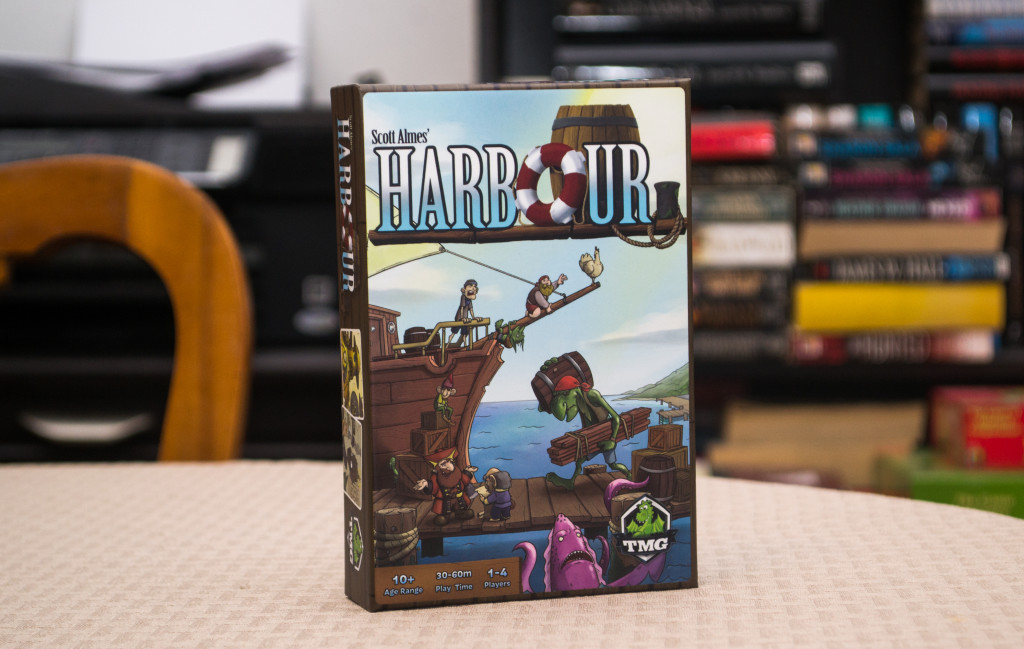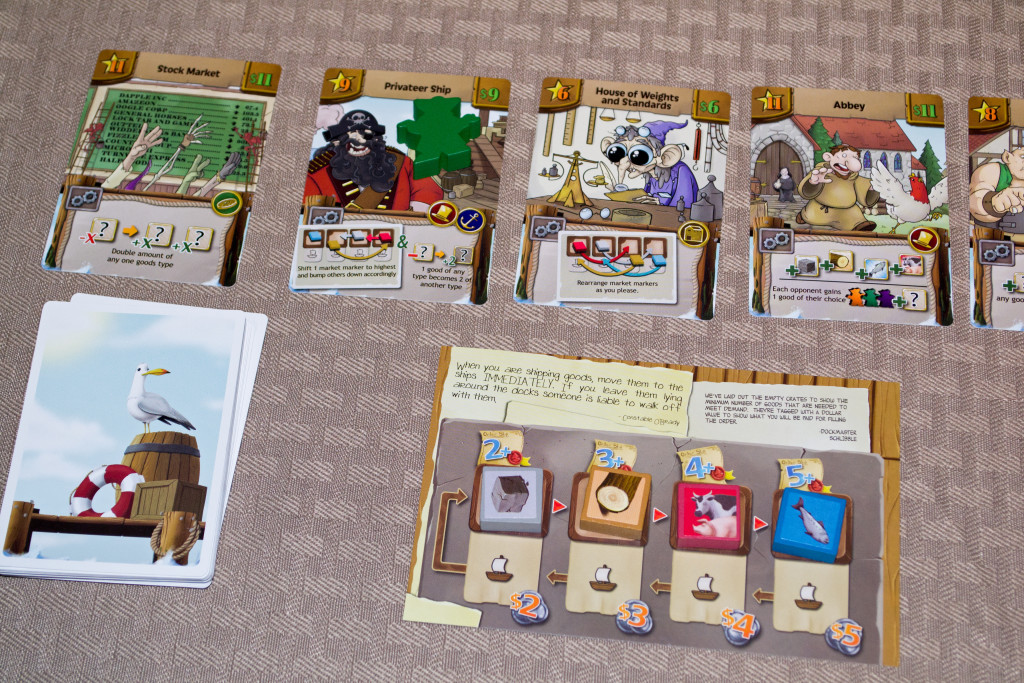Fancy yourself an entrepreneur, be it in real life or in the twisted depths of your mind? “Harbour” just might be the ticket, as players in this game will be tasked with collecting goods and then selling said goods to purchase buildings. The player with the most valuable buildings at the game’s end will win, though that’s just the tip of the iceberg. These buildings allow players to take specific actions that not only help them to collect resources, but keep the prices in the market ever-changing.
Setup & Gameplay
Each player gets a player board, a set of good markers, and a pawn of their color. They’ll then allot a total of 3 resources of their choosing with the four goods markers they have available. The market board goods trackers are placed randomly on the four slots (one each). The buildings are shuffled a number are drawn face-up on the table equal to the number of players plus three. The person who was most recently on a boat goes first.
On a player’s turn, they’ll move their pawn to a vacant building and take the action. This can be a building they own, a building not yet purchased, or a building owned by another player (though you have to pay a resource for that privilege). Some buildings grant you resources, some allow you to adjust the market, some allow you to buy a building, and etc. There is no physical money in this game, so players will be trading resources to gain temporary cash, which is then used to purchase a building on the same turn. When resources are sold, the market good trackers are switched around to reflect a change in demand.
Players continue taking turns until someone buys their fourth building. Each player will get one last turn and whoever has the most VPs (they are listed on the building cards), wins!
Editor’s Note: The above doesn’t cover all of the rules found in the manual, but should give you the general idea as to how the game is played.
The Review
Firstly, I’d like to commend the game for having such a wide variety of effects and abilities. The buildings themselves each do something unique, making me think each and every turn about what I should be doing to further my goals. The player boards themselves each have unique personalities that give players special abilities, though you can opt to play with the standard characters (on the reverse side) if you want so that everyone is on equal footing.
Admittedly, the market took some getting used to. You see, part of me couldn’t wrap my head around the fact that you HAD to have a minimum number of a good in order to sell it at all and that each good (no matter what it is) is worth 1 cash. It’s simply the demand for the good that changes, which in turn affects how much you HAVE to sell. For example, if the fish market token is on the “5”, then I’d need five fish before I could sell it. I expected an economy to where the prices fluctuated based on demand and a system that would allow a person be able to sell only one or two fish for the price listed, but it doesn’t work that way.
The market is also extremely volatile, changing constantly at the drop of a hat. Luckily there are only four resources so the challenge here it to time your resource gathering of a specific type with when you think it’ll be in high demand. If you see your opponent about to sell stone at “5”, for example, then you know that all the resources behind it will “move up”. As such, it might be a good idea to plan ahead and gather say, livestock, so that you can cash in just as it becomes a high-valued commodity.
“Harbour” is a decent resource management/timing game that is fairly enjoyable once you get used to the odd way the market handles. I think the market fluctuates too much at times, though others may enjoy this chaos and see it as yet another challenge to overcome. Everything else about “Harbour” is of good quality, making it an easy recommend for gamers who enjoy lighter resource management games.
Final Verdict: 8/10
—


